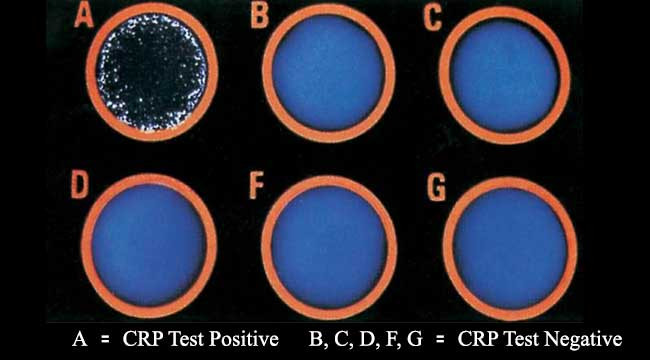Definisi
HIV atau Human Immunodeficiency Virus merupakan virus yang menyerang sistem kekebalan tubuh dan menyebabkan daya tahan tubuh menurun sehingga tubuh lebih rentan mengalami infeksi. HIV dapat menyebabkan AIDS (Acquired Immunodeficiency Syndrome) dan merupakan fase keparahan serius dari infeksi HIV.
Tanpa adanya penanganan dan pengobatan, HIV perlahan akan menghancurkan sistem kekebalan tubuh dan menyebabkan AIDS dalam waktu kurang lebih 10 tahun. AIDS sendiri merupakan tahap akhir dan paling serius dari infeksi dari HIV. Pada kondisi tersebut, tubuh akan kesulitan dalam menghadapi serangan infeksi dari bakteri yang biasanya tidak berakibat fatal pada orang dewasa sehat (disebut juga dengan infeksi opportunis) hingga berakibat kematian. Pada beberapa kasus, AIDS juga dapat meningkatkan risiko berkembangnya kanker.
Perbedaan antara HIV dan AIDS adalah HIV merupakan virus yang melemahkan sistem kekebalan tubuh sedangkan AIDS merupakan kondisi yang terjadi karena infeksi HIV ketika sistem imun Anda melemah. Pengobatan dapat memperlambat efek dari virus tetapi tidak pada semua orang dengan HIV akan menjadi penderita AIDS.
Penyebab
HIV merupakan variasi dari virus yang dipindahkan dari simpanse Afrika. Peneliti memperkirakan adanya kemiripan antara simian immunodeficiency virus (SIV) dari simpase dengan manusia. Ketika berada di dalam populasi manusia, virus tersebut bermutasi menjadi virus yang dikenal sebagai HIV.
HIV dapat didapatkan melalui darah, semen, cairan vagina, cairan susu dan cairan rektal dari pasien yang terinfeksi. Virus tersebut tidak dapat masuk melalui kulit Anda kecuali Anda memiliki luka. Ibu hamil dengan HIV dapat menularkan virus tersebut pada anaknya. Seseorang tidak dapat terinfeksi AIDS bila tidak terkontak dengan HIV.
Faktor Risiko
Faktor risiko dari HIV AIDS adalah kontak dengan cairan tubuh dari penderita. Hal tersebut dapat terjadi apabila seseorang memiliki hubungan seksual yang bebas atau penggunaan jarum yang bersama - sama dengan orang yang terinfeksi HIV.
Gejala
Tidak semua orang yang terinfeksi HIV akan memiliki gejala yang khas, terutama pada tahap awal. Beberapa gejala yang biasanya muncul mirip dengan gejala flu ketika Anda pertama kali terinfeksi HIV, seperti demam, kedinginan, kelelahan, sakit tenggorokan, nyeri otot, keringat pada malam hari, kulit kemerahan, pembengkakan kelenjar limfe, dan sakit mulut.
Infeksi HIV memiliki 3 tahap, yaitu:
- Tahap HIV akut
Beberapa orang akan mengalami gejala seperti flu selama sebulan atau 2 bulan setelah terinfeksi dengan HIV. Gejala yang muncul akan hilang dalam waktu 1 minggu hingga 1 bulan.
- Tahap kronis atau latensi klinis
Anda dapat memiliki HIV selama beberapa tahun tanpa merasakan saki. Perlu diketahui bahwa Anda dapat menularkan HIV ke orang lain walau Anda baik - baik saja.
- Tahap AIDS
Pada tahap ini, HIV telah melemahkan sistem imun tubuh Anda dan gejala yang timbul sesuai dengan infeksi oportunis (infeksi yang menyerang saat sistem imun Anda dilemahkan oleh HIV) yang terjadi. Anda memiliki kemungkinan lebih tinggi mendapatkan kanker tertentu ketika Anda memiliki AIDS.
Diagnosa
Diagnosa HIV dilakukan dengan pemeriksaan pada darah atau air ludah (saliva). Pemeriksaan ini dapat Anda lakukan di rumah atau di rumah sakit atau laboratorium yang menyediakan pemeriksaan. Bila pemeriksaan Anda menunjukkan hasil negatif, tidak perlu dilakukan pemeriksaan lebih lanjut bila Anda tidak memiliki kemungkinan terpapar 3 bulan sebelum pemeriksaan dengan pemeriksaan lain serta tidak terpapar dalam rentang waktu sejak pemeriksaan darah dilakukan.
Bila Anda memiliki kemungkinan terpapar dalam rentang waktu 3 bulan dari pemeriksaan, Anda perlu mempertimbangkan pemeriksaan ulang untuk memastikan kembali hasil negatif Anda. Bila hasil pemeriksaan Anda positif, pemeriksaan laboratorium lebih lanjut perlu dilakukan untuk memastikan kembali hasil pemeriksaan.
Terdapat 3 tipe pemeriksaan HIV yang dapat dilakukan, yaitu:
- Pemeriksaan antigen/antibodi
Pemeriksaan antigen dilakukan untuk mencari marker atau penanda yang disebut dengan p24. Pemeriksaan antibodi mencari kandungan dari tubuh Anda yang beraksi dengan marker atau penanda tersebut. Pemeriksaan antigen/antibodi dilakukan untuk mencari keduanya.
Dokter akan mengambil sampel darah Anda dari lengan Anda dengan jarum. Darah tersebut akan dikirimkan ke laboratorium dan dilakukan pemeriksaan p24 dan antibodi. Pemeriksaan antigen/antibodi biasanya dapat mendeteksi adanya HIV dalam waktu 18 hingga 45 hari setelah terpapar virus HIV.
- Pemeriksaan antibodi
Pemeriksaan ini dilakukan untuk mencari antibodi dari sampel darah atau saliva Anda. Pemeriksaan ini dilakukan dengan mengambil sampel dari lengan atau jari Anda atau dengan stik yang diusapkan pada gusi untuk mengambil sampel air liur Anda. Pemeriksaan antibodi dapat dilakukan 23 hingga 90 hari setelah paparan untuk dapat mendeteksi HIV.
- Pemeriksaan asam nukleat (Nucleic Acid Tests / NATs)
Pemeriksaan ini dilakukan untuk mencari virus HIV di dalam darah. Petugas kesehatan akan mengambil sampel darah dari lengan Anda dengan jari dan sampel darah akan dikirimkan ke laboratorium untuk pemeriksaan HIV. Pemeriksaan NATs biasanya dapat mendeteksi HIV sejak 10 hingga 33 hari setelah terpapar.
Pemeriksaan ini biasanya tidak terlalu sering dilakukan bila Anda memiliki risiko tinggi terpapar. Bila pemeriksaan Anda menunjukkan hasil positif, dokter biasanya akan menyarankan pemeriksaan lebih lanjut untuk memeriksa kesehatan Anda.
Pada pemeriksaan darah lengkap, dapat disertakan beberapa pemeriksaan seperti pemeriksaan awal virus hepatitis, pemeriksaan X-ray dada, Pap Smear, pemeriksaan CD4, tuberkulosis.
Tata Laksana
Orang yang terinfeksi HIV dapat mengonsumsi kombinasi obat melalui mulut setiap hari. Kombinasi obat ini disebut dengan terapi antiretroviral atau ART. Kombinasi obat tersebut merupakan salah satu cara efektif dalam menjaga agar HIV tidak memperbanyak diri dan menghancurkan sel Anda.
Komplikasi
Komplikasi pada HIV AIDS terjadi pada tahap ke 3, HIV mengurangi kemampuan tubuh menghadapi infeksi dan komplikasi terkait serta kanker. Pengobatan saat ini cukup efektif dalam mencegah infeksi, tetapi pada pasien HIV yang tidak menerima pengobatan, infeksi laten yang terjadi dapat menjadi permasalahan serius.
Beberapa infeksi oportunis dapat menyebabkan komplikasi seperti:
- Kandidiasis
- Coccidioidomycosis
- Cryptococcosis
- Crytosporidiosis
- Cytomegalovirus disease (CMV)
- Herpes
- Histoplasmosis
- Tuberkulosis
- Infeksi mikobakteria
- Pneumonia berulang
- Toxoplasma
- Salmonella
Selain itu, beberapa permasalahan kesehatan lainnya seperti enselopati dan memiliki risiko lebih tinggi mengalami kanker juga dapat terjadi pada orang yang terinfeksi HIV.
Pencegahan
Cara terbaik untuk mengurangi risiko terinfeksi HIV adalah dengan lebih memperhatikan bagaimana virus tersebut menyebar dan melindungi diri Anda. Beberapa hal yang dapat dilakukan seperti:
- Menggunakan pengaman (kondom) ketika berhubungan seksual
- Menghindari penggunaan jarum bersama dalam menggunakan obat
- Tidak menggunakan kondom dari produk hewan
- Menggunakan lubrikan berbasis air
- Melakukan pemeriksaan dan pengobatan untuk penyakit menular seksual lainnya
Pada orang yang sudah terinfeksi HIV, hal yang perlu dilakukan adalah mencegah terjadinya komplikasi untuk memperpanjang kehidupan dari seseorang, terutama pada tahap akhir HIV. Beberapa hal yang dapat dilakukan untuk mencegah komplikasi meliputi:
- Mengonsumsi obat dengan rutin
- Melakukan vaksinasi untuk potensi infeksi oportunis,
- Mengidentifikasi dan membatasi paparan dari lingkungan yang dapat menyebabkan infeksi
- Menghindari makanan yang memiliki risiko tinggi terkontaminasi seperti telur ya tidak termasak sempurna, tidak mengkonsumsi air langsung dari sungai atau danau atau air langsung pada negara tertentu
Kapan Harus ke Dokter
Segera menghubungi dokter Anda bila Anda merasa terpapar dengan HIV. Menjalani pengobatan sesegera mungkin merupakan langkah penting dalam pengobatan HIV. Bila Anda memiliki HIV, Anda perlu mengikuti instruksi yang diberikan oleh dokter Anda. Selain itu, penting untuk mengatasi infeksi yang Anda alami, segera hubungi dokter bila Anda mengalami gejala seperti demam, keringat pada malam hari, diare atau kondisi lain yang mengkhawatirkan Anda.
Mau tahu informasi seputar penyakit lainnya? Cek di sini, ya!
- dr. Lukita Tarigan
Centers for Disease Control and Prevention. (2022, June 30). About HIV/AIDS. Centers for Disease Control and Prevention. Retrieved March 13, 2023, from https://www.cdc.gov/hiv/basics/whatishiv.html
HIV & AIDS: Causes, symptoms, treatment & prevention. Cleveland Clinic. (n.d.). Retrieved March 13, 2023, from https://my.clevelandclinic.org/health/diseases/4251-hiv-aids
Mayo Foundation for Medical Education and Research. (2022, July 29). HIV/AIDS. Mayo Clinic. Retrieved March 13, 2023, from https://www.mayoclinic.org/diseases-conditions/hiv-aids/symptoms-causes/syc-20373524
MediLexicon International. (n.d.). HIV and AIDS: Overview, causes, symptoms, and treatments. Medical News Today. Retrieved March 13, 2023, from https://www.medicalnewstoday.com/articles/17131
Pietrangelo, A. (n.d.). HIV and AIDS: Causes, symptoms, treatments, and more. Healthline. Retrieved April 4, 2023, from https://www.healthline.com/health/hiv-aids
U.S. National Library of Medicine. (n.d.). HIV/AIDS: Medlineplus medical encyclopedia. MedlinePlus. Retrieved March 13, 2023, from https://medlineplus.gov/ency/article/000594.htm
World Health Organization. (n.d.). HIV/AIDS. World Health Organization. Retrieved March 13, 2023, from https://www.who.int/health-topics/hiv-aids#tab=tab_1











